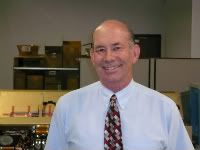Energy Storage – News from the Infocast “Storage Week” Show
There are elements of the energy business that I find monstrously complex – namely, everything but the technology. The political wranglings – the way the federal, regional, state, and local agencies work in conjunction with the utilities and the regulatory bodies – appear to be the ultimate rats’ nest.
Here’s a good example of how nutty this looks: the power utilities in the US remain uninterested in – and in some cases actively resistant to — electric vehicles. Is there anything not to like about EVs if you’re a utility? It means sales of off-peak power, of which there is a super abundance, and it means stable, long-term growth as electricity replaces oil. Isn’t that good? Maybe someone can explain this.
Of course, the incentives that utilities have are quite enigmatic. It’s said that the real core competency of utilities is the management of regulators. The game is finding clever ways to pass through your costs to the rate-payers. And that represents a nasty little element of the equation: utilities can pass through fuel costs, so getting rid of coal in favor of a resource in which the fuel is free (e.g., solar and wind) represents zero gain in profitability.
In fact, utilities couldn’t care less what fuel they use – or what technologies they’re mandated to use. As long as they can make 12% return on their invested cash, they’ll happily do anything they’re told. Want wave/tidal power in Kansas? No problem, let me charge my customers what it costs to get me 12% on that, and it’s a deal.
It’s one of those moments where I wish I were king of the world. I just think of how easy it would be to create a way to regulate utilities that would provide incentive to do the right thing. I’m available to function as king, btw, but so far I haven’t received the invitation to serve.

 I have three meetings tomorrow, starting with a book interview about 140 miles from here with my old friend Wally Rippel. Wally’s been following the controversy on cold fusion pretty much since its inception 20+ years ago, and there is no one whose judgement I trust more to help me navigate this tricky subject.
I have three meetings tomorrow, starting with a book interview about 140 miles from here with my old friend Wally Rippel. Wally’s been following the controversy on cold fusion pretty much since its inception 20+ years ago, and there is no one whose judgement I trust more to help me navigate this tricky subject.



 His position that biomass holds huge promise while solar is “cute” and “for rich people” is pretty far out there on the fringe.
His position that biomass holds huge promise while solar is “cute” and “for rich people” is pretty far out there on the fringe.